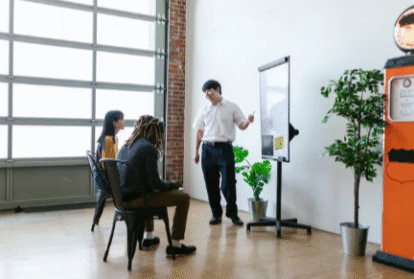User interface design has transformed remarkably over the decades. From the utilitarian command line interfaces of early computing to the visually engaging graphical user interfaces, each phase reflects a significant shift in user interaction. Today, emphasis lies on personalization and accessibility, with features designed to enhance user autonomy. Yet, as technology evolves, so too does the potential for more immersive experiences. What lies ahead in this dynamic landscape?
The Early Days of User Interface Design
As computers began to emerge from the shadows of academia into the hands of everyday users, the early days of user interface design marked a pivotal shift in how humans interacted with machines.
Text-based interfaces dominated, relying heavily on command line inputs, empowering users through direct engagement. This raw, unadorned interaction fostered a profound sense of freedom, as users navigated complex tasks with an unparalleled sense of control.
Read more: The Impact of Technology on Music Production and Distribution
The Rise of Graphical User Interfaces
How did the introduction of graphical user interfaces (GUIs) transform the landscape of human-computer interaction?
GUIs, through their graphical innovations, democratized technology, making it accessible to a broader audience. Users could now navigate complex systems visually, enhancing interface accessibility.
This shift not only empowered individuals but also fostered creativity and exploration, reshaping how people engaged with digital environments and unlocking new possibilities for interaction.
Current Trends in User Interface Design
What distinguishes today’s user interface design from that of previous decades?
Contemporary trends emphasize user autonomy, featuring dark mode options that enhance visual comfort and reduce eye strain.
Additionally, voice interfaces are increasingly integrated, allowing for hands-free navigation and interaction.
These advancements reflect a shift towards more intuitive, adaptable experiences, empowering users to engage with technology in ways that align with their personal preferences and lifestyles.
The Future of User Interface Design
The landscape of user interface design is poised for significant transformation, driven by emerging technologies and evolving user expectations.
Future interfaces will likely feature voice interfaces that enhance accessibility, immersive experiences that captivate users, and adaptive layouts that respond to individual preferences.
Additionally, AI integration will personalize interactions, creating a seamless, intuitive environment where users feel empowered and engaged in their digital journeys.
Conclusion
In the grand tapestry of technology, user interface design weaves a vibrant thread, transitioning from the stark monochrome of command lines to the rich canvas of graphical environments. Today, it dances with user autonomy, embracing dark modes and voice commands as brushstrokes of personalization. As we peer into the horizon, the promise of AI and immersive experiences beckons like a sunrise, inviting users to navigate an ever-evolving landscape where their interactions blossom into a symphony of seamless connectivity.



